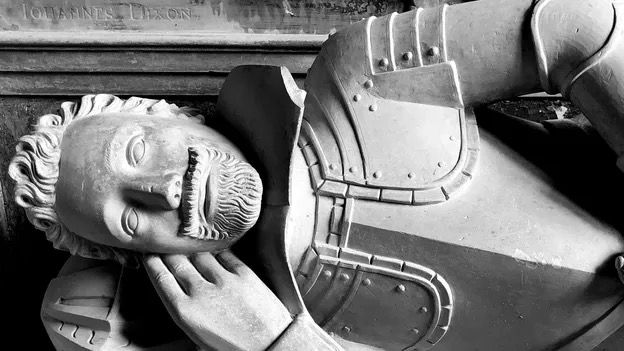Beyond the Shields and Towers: Roger of Hereford and the Hidden Science of Medieval England
- Templar Webmaster

- 17 hours ago
- 3 min read

Introduction: Looking Beyond the Battlefield
When most of us picture medieval England, our minds leap to castle keeps, gallant knights, monastic scribes, and perhaps the distant echoes of crusaders setting sail. Yet, beneath the clang of armour and the chanting of monks, there were quieter revolutions unfolding — not of sword or faith, but of science.
Among these overlooked figures is Roger of Hereford, a 12th-century scholar whose work brought the heavens down to England’s western shires. While his name seldom graces history books, his contribution marked one of the earliest attempts to anchor celestial knowledge directly to English soil.
The Man from the Marches
Roger of Hereford — sometimes called Roger Infans (“Roger the Younger”) — was active around 1176 to 1198, living and working in or near the cathedral city of Hereford. In an age when learning often travelled slowly across Europe, Roger stood at the crossroads of several intellectual worlds: classical Latin learning, Arabic astronomical theory, and the practical needs of the English church.
He was not a monk, knight, or nobleman, but rather a computist — someone who calculated time and celestial movements to determine religious festivals and predict the future. His surviving works show him to be a man of both faith and curiosity: a rare blend in a time when astronomy and astrology walked hand in hand.
The Meridian of Hereford
In 1178, Roger did something remarkable. He composed astronomical tables for the meridian of Hereford — meaning he recalculated the celestial coordinates so that they matched the latitude and longitude of that specific English city.
Until then, most astronomical tables used data fixed to foreign meridians like Toledo, Marseilles, or even Baghdad. By localising the science, Roger effectively said: “The heavens move above Hereford just as they do over the Mediterranean.”
It was a bold intellectual gesture — one that brought the vast medieval cosmos into alignment with English reality. His tables could be used by local scholars, priests, and even astrologers to predict eclipses, feast days, or horoscopes without relying on imported numbers.
Books of the Planets and the Signs
Roger’s known works include:
De Computo – A guide to calculating the date of Easter and other movable feasts (c. 1176).
Theorica Planetarum – A treatise on planetary theory, exploring how the seven classical planets move through the heavens.
De Ortu et Occasu Signorum – On the rising and setting of zodiac signs, blending astronomy and astrology.
Fragments of these survive in manuscripts across England, and some scholars believe his writings influenced later medieval English astronomers, including those at Oxford and the early universities.
A Worldly Scholar in a Local Cloister
Roger’s writings show traces of Arabic scientific influence, probably transmitted via Latin translations from Spain. This was part of a broader 12th-century “translation movement” — one that would eventually transform Western science.
In Hereford, of all places, Roger managed to absorb this cosmopolitan learning and adapt it for English use. His work demonstrates that the intellectual ferment of the age did not belong solely to great centres like Paris or Toledo, but reached even the quieter corners of the Marches.
Why Roger Matters Today
Roger of Hereford represents the unseen face of medieval England — the scholar who measured stars while others measured land and loyalty.
For readers of The Knights Templar 1119, his life provides a valuable counterpoint to the military and religious narratives we know so well. It reminds us that medieval England was not only a place of piety and conflict, but also of curiosity, calculation, and connection.
Just as the Templars were part of a wider European and Eastern network, so too was Roger — a man linking Hereford to the intellectual currents of the Islamic world and beyond.
Closing Thought
In the age of knights, crusaders, and cathedral builders, Roger of Hereford looked not to Jerusalem or Westminster — but to the stars above Hereford. His calculations may have faded from use, but his legacy endures as a reminder that the Middle Ages were as much an age of minds as of swords.




Comments